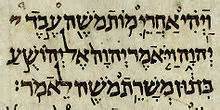"Remember the Lord" -- Nehemiah 4:1-14
 Tuesday, November 29, 2016 at 09:52AM
Tuesday, November 29, 2016 at 09:52AM  The Fourteenth in a Series of Sermons on Ezra-Nehemiah
The Fourteenth in a Series of Sermons on Ezra-Nehemiah
Nehemiah 3 is a “nothing but the facts” kind of chapter which reflects a genuine kumbaya moment in Israel’s history. Virtually the entire population of Jerusalem joined together to repair the city’s walls. But that sense of peace and unity was about to be put to the test when the city is suddenly threatened by Gentile neighbors and apostate Jews, who did not want to see Jerusalem rise from rubble and ashes and return to the great city it once had been. The work of rebuilding continues in earnest in chapter 4 under the direction of Nehemiah, but with taunts and threats being directed toward the Jews from Israel’s neighbors, there is a new and profound sense of urgency to complete the walls because of threat of imminent attack.
We are continuing our series on Ezra and Nehemiah and now we come to Nehemiah 4, where we find a completely different set of circumstances from that described in chapter 3. As we saw last time, Nehemiah pulled off the remarkable feat of organizing and mobilizing the inhabitants of Jerusalem to undertake the huge task of rebuilding the city’s walls, gates, and defenses. There was a wonderful sense of unity among the inhabitants of Jerusalem as everyone from the high priest to perfume-makers and merchants join together to begin the laborious process of rebuilding the city’s fallen fortifications.
But if unity of the citizens of Jerusalem was the theme of chapter 3, in chapter 4 collective opposition from Israel’s neighbors to the rebuilding project seems to come from all quarters. There are the Samaritans to the north and west (i.e., a mixture of Jewish apostates and “the peoples of the land”– Gentiles relocated there by the Persians). There are Arabian tribes associated with Geshem (“chunky”) which likely included the Idumeans, who were from the provinces immediately to the south of Judah, and while technically under Persian control, were only loosely so. The Ammonites were located to the east of Judah (in what is now Jordan). They too were under Persian administration, but they resented the people of Judah and certainly did not want to see Jerusalem rebuilt, its temple restored, or the nation of Israel prosper once again. A new group of adversaries is mentioned in chapter 4, the descendants of the ancient Philistines (the Ashdodites). They too have a long history of hostility toward Israel.
The chief protagonist in the Book of Nehemiah (first mentioned in chapter two) reappears in chapter 4–Sanballat, who now launches into a prolonged and bitter diatribe against Nehemiah and the people of God. There is really nothing Sanballat can do to stop the rebuilding process, yet that does not keep him from making threats and mocking the Jews and their efforts to rebuild. Since Nehemiah is operating with the full authority of the Persian king Artaxerxes I, Sanballat has no legal authority whatsoever to interfere with the rebuilding project in Jerusalem. Sanballat is very likely resentful of the fact that the king’s cupbearer has been appointed governor over a region (Judah) which, until Nehemiah’s arrival, had been under Sanballat’s control. And as long as Sanballat was in charge, the situation in Jerusalem would remain as it had been–the city would remain in ruins even if the temple itself had been rebuilt.
To read the rest of this sermon, Click Here


Reader Comments